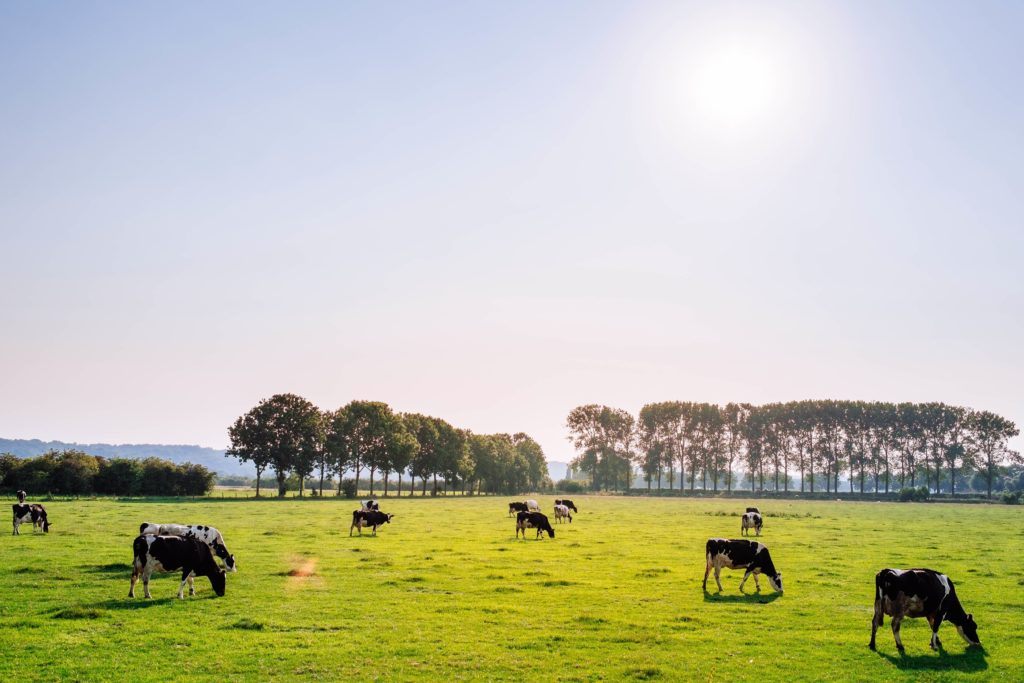Regenerative Agriculture is a System, Not a Single Practice
 This is the second blog post in a series of four outlining the reasons – scientific, economic, and social – why regenerative agriculture should be included in the suite of solutions we pursue as a society to solve the climate crisis. We need agriculture to help mitigate climate change, and agriculture needs regenerative practices to become more resilient to the environmental and economic impacts of climate change. And we need everyone in agriculture – from small to large farms, individual farmers to corporations – to implement regenerative practices at the scale needed to make a difference.
This is the second blog post in a series of four outlining the reasons – scientific, economic, and social – why regenerative agriculture should be included in the suite of solutions we pursue as a society to solve the climate crisis. We need agriculture to help mitigate climate change, and agriculture needs regenerative practices to become more resilient to the environmental and economic impacts of climate change. And we need everyone in agriculture – from small to large farms, individual farmers to corporations – to implement regenerative practices at the scale needed to make a difference.
As affirmed by the IPCC and a wide body of scientific research, better farming practices can combat climate change by putting atmospheric carbon into the soil—while also reducing emissions of key greenhouse gases. Regenerative agriculture practices can also build resiliency in agricultural systems and help address broader environmental problems associated with agricultural production.
Our focus needs to shift from looking at single practices in isolation to a more holistic, integrated approach to maximize the carbon sequestering power of agricultural soils.
Our focus needs to shift from looking at single practices in isolation to a more holistic, integrated approach to maximize the carbon sequestering power of agricultural soils. Regenerative agriculture is about creating a system where a toolbox of practices is utilized depending on what is being produced, soil conditions, and the local climate. It is about developing management plans that improve the ecological, social, and economic conditions of the farm, ranch, and community. By combining practices such as no-till or reduced till, cover crops, and diverse crop rotations, including perennial crops we help build resilient, productive systems.
Regenerative agriculture also involves broader conservation practices that serve the farming operation as well as the environment, the community, and society at large. Some examples include grassed waterways and buffer strips to protect water quality, hedgerows to reduce erosion, integrated livestock management and grazing for soil fertility, and the return of marginal lands to perennial grasses and trees. Taken together, the full spectrum of regenerative farming practices serves both to maintain existing soil carbon and to increase soil carbon by pulling it from the atmosphere.
Ultimately, we will only transform the agricultural landscape if we move from a single conservation practice towards a holistic system that favors biodiversity, keeps plants in the ground throughout the year, and protects the soil. We know this is not done quickly in many cases and that the science is not entirely settled about how effectively it can be done in all settings with the same result, but we know it works both for mitigating greenhouse gases and in adapting to the climate disruptions we face.
Ultimately, we will only transform the agricultural landscape if we move from a single conservation practice towards a holistic system that favors biodiversity, keeps plants in the ground throughout the year, and protects the soil.
What remains to be seen is whether socioeconomic and political barriers can be overcome in time to implement the solutions at scale.

